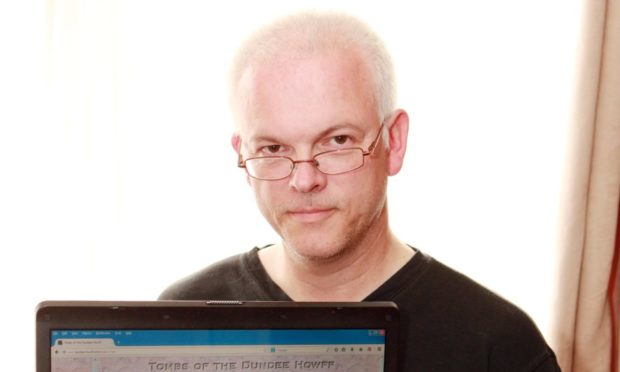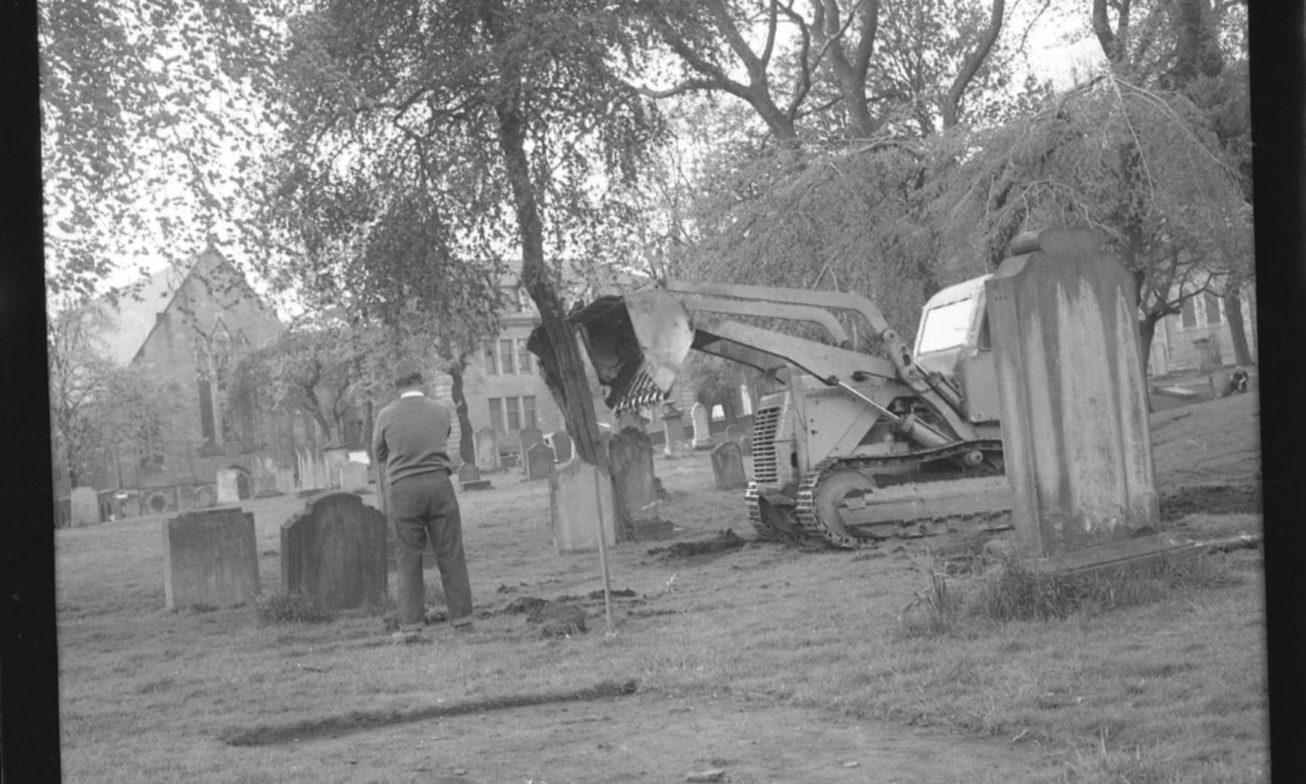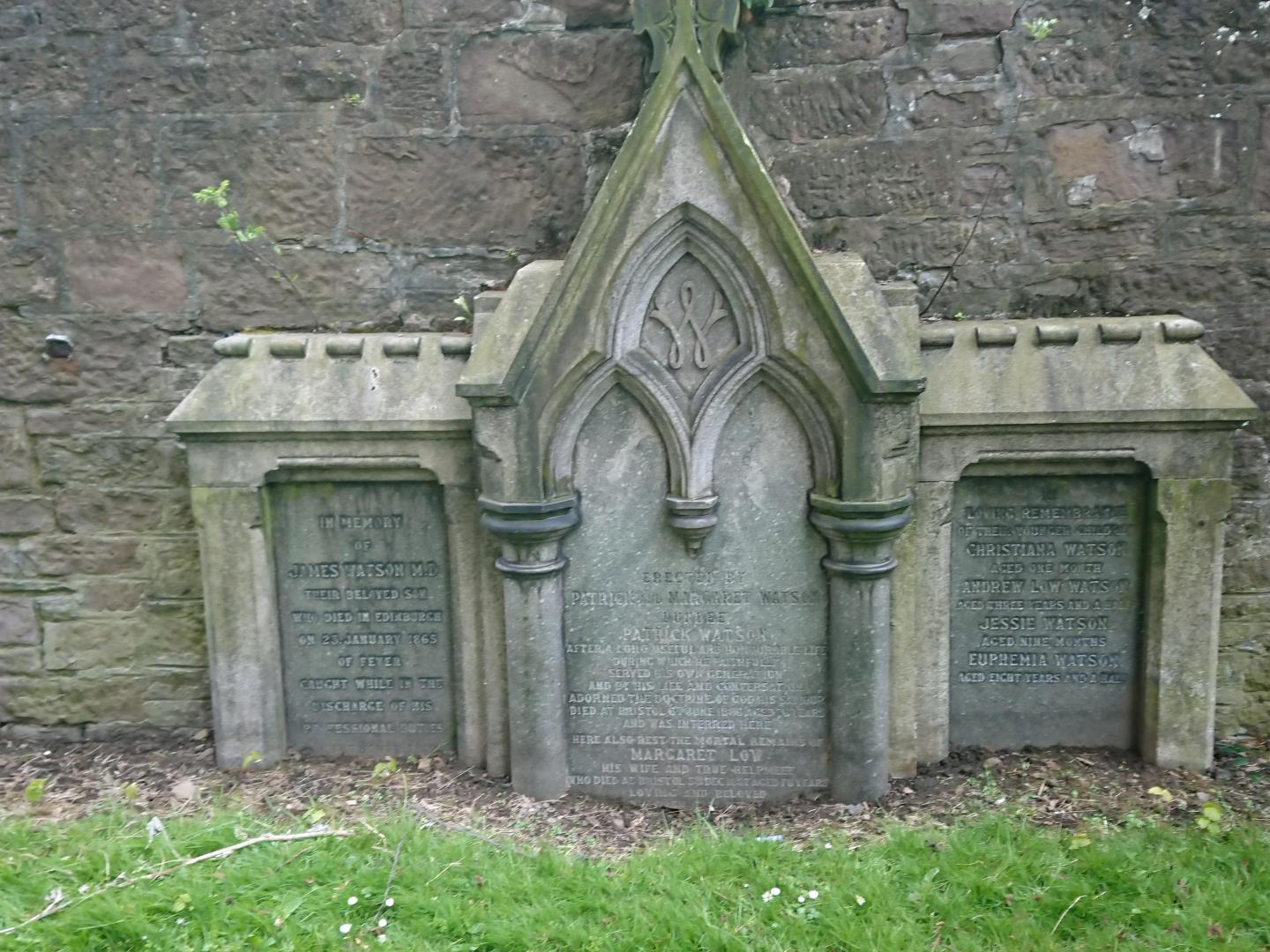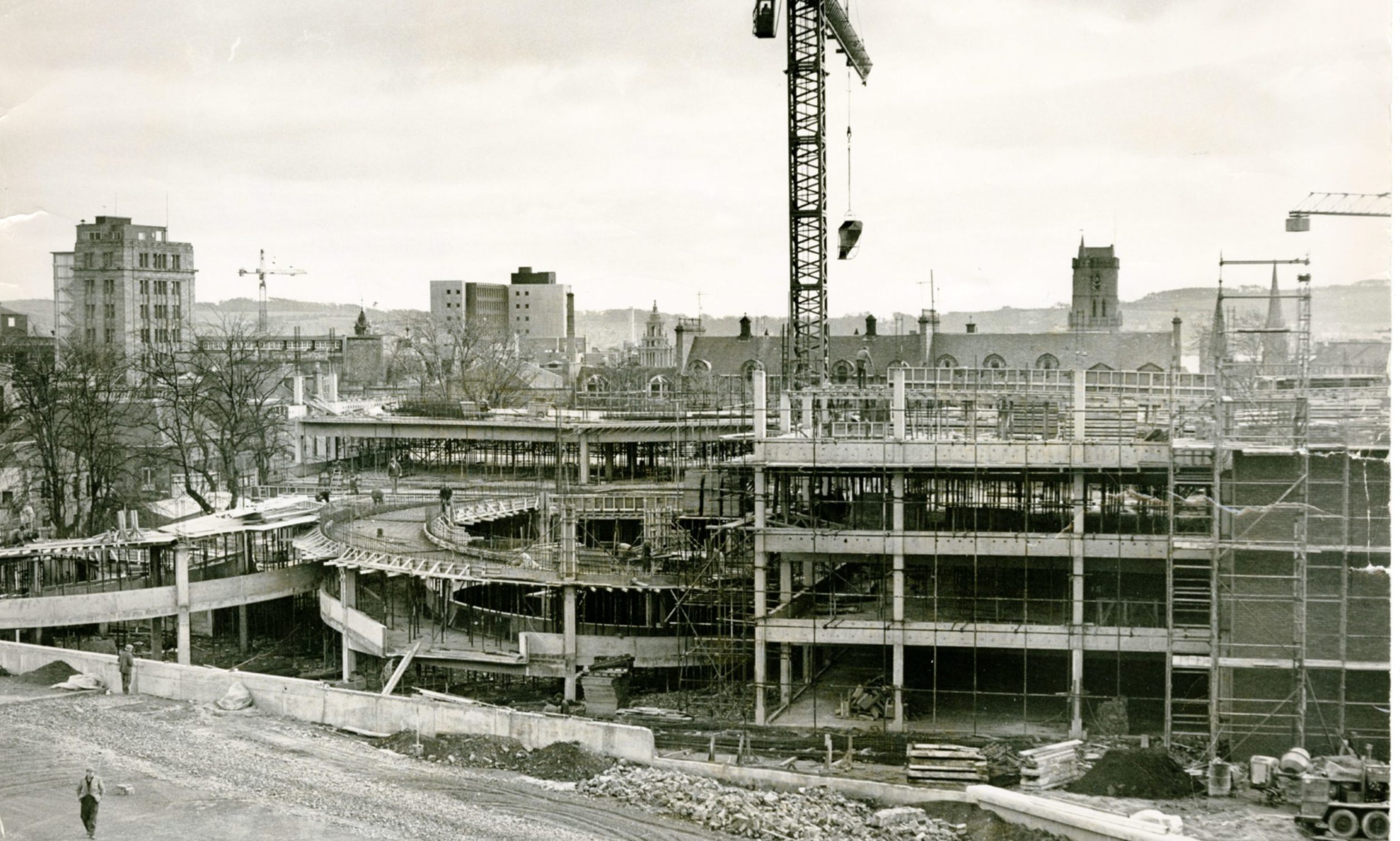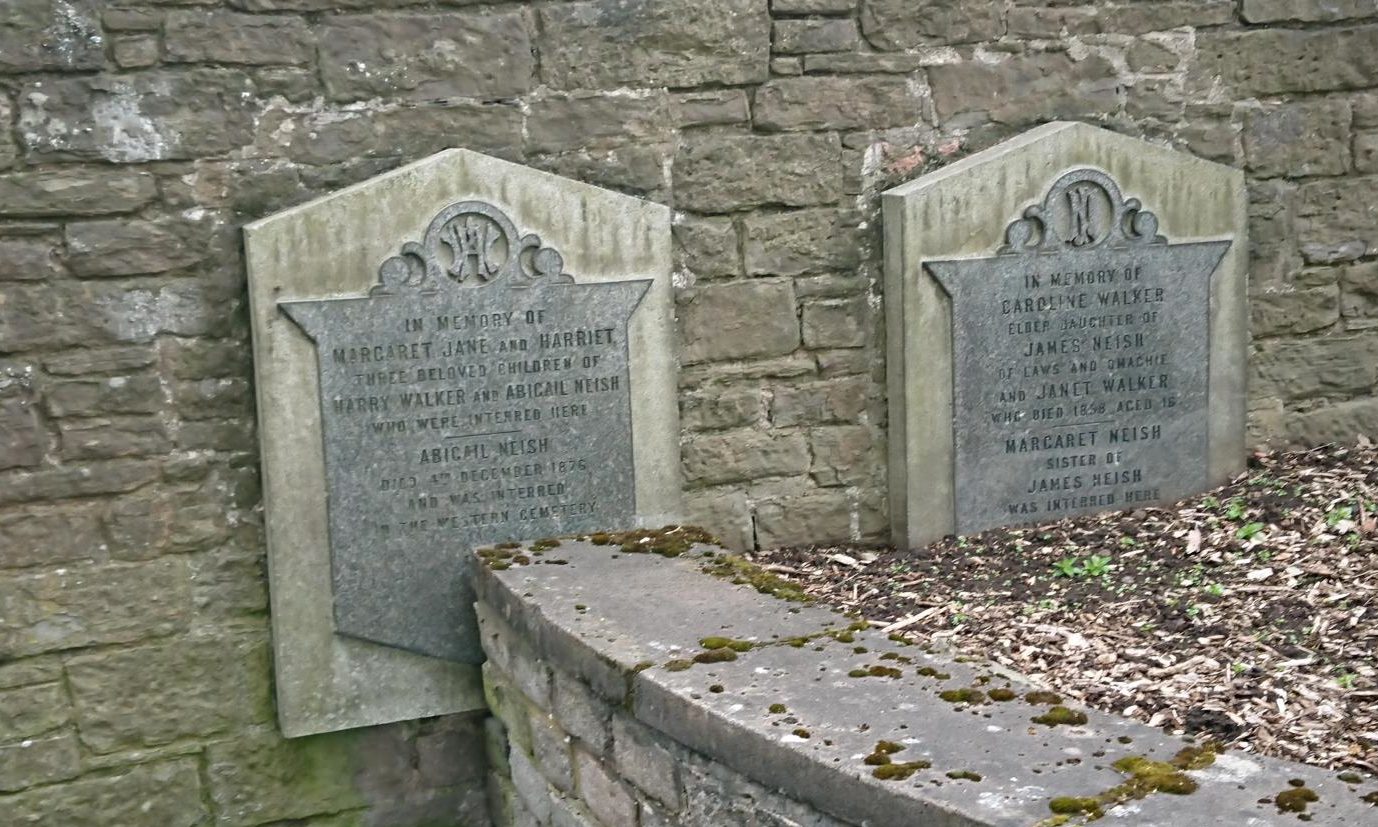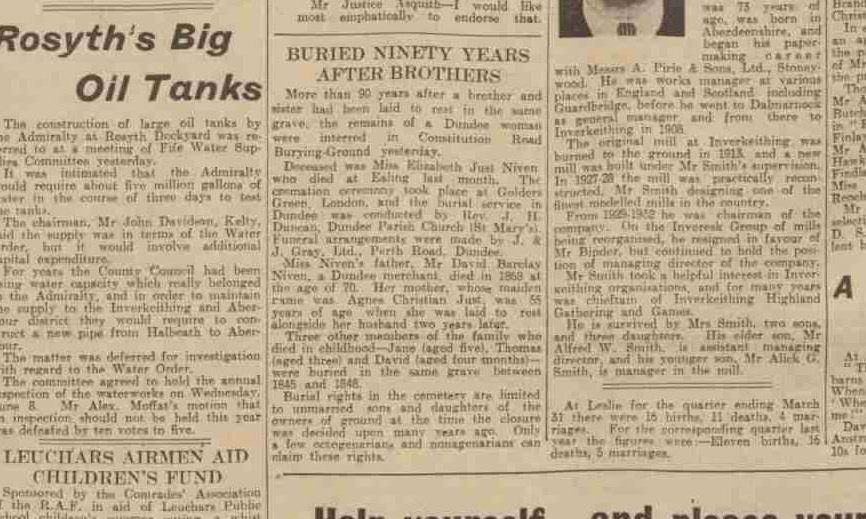After more than 50 years, the deported dead of Dundee’s New Howff are to be given a lasting memorial.
In the 1960s, the remains of up 30,000 people were cleared and reinterred in a mass grave at Eastern Cemetery.
Constitution Road burial ground was tarred over as a car park and a decade or so later, Bell Street multi-storey car park was built in its place.
Memorial stones can still be seen on the remaining western wall nearest the police station.
Now a project is under way to create a map showing where generations of Dundonians were buried and the inscriptions that once appeared on their stones.
The man behind the effort, amateur historian Darren Eyers, also hopes to uncover personal details of the new Howff deceased to create obituaries to accompany the map and memorial transcriptions.
Mr Eyers (49), a handyman with Dundee City Council, undertook a similar project for the old Howff, beginning in 2001, when he started photographing tombstones and transcribing inscriptions.
In 2015, Darren had a discussion with then Dundee city archivist Iain Flett and they came up with the idea of transcribing the burial registers for the New Howff.
This project was designed to complement the work already undertaken by Friends of Dundee City Archives and Tay Valley Family History Society but would use a more advanced content management system and plot numbers to create a more searchable database.
So far, Darren has transcribed 25,000 entries from the burial registers kept by Dundee City Council. He gets through a month of burials each evening and estimates there are 30,000 names in the volumes relating to the New Howff.
Conservation support
He has had support from the Howff Conservation Group, which provided Darren with transcriptions it had already produced, speeding up his project.
“The Dundee city registers are kept in excellent condition and I was allowed to photograph them over two days. The Dundee registers date back to 1777 and the new Howff registers began with the first burial in 1836. The last burial took place in 1938,” said Darren.
His research revealed that each plot was split into three separate graves, each containing up to 10 people. Unless a family bought their own plot, the deceased were simply allocated a space in an already-opened grave.
Darren also has access to the lair register, which lists lair owners and how much they paid for the ground. The burial registers have individual costings per burial.
“I also use a lot of resources such as the Dundee Directory and newspaper archives to almost build up a three-dimensional picture of people and their lives. The internet has made it possible to do that.”
Tragedies in Dundee
He has discovered a huge number of road fatalities in Victorian Dundee, far higher than could be expected today.
“Being run down by a horse and cart was the cause of a surprising number of deaths during the 1800s, that and perishing because your clothes had caught fire,” said Darren.
“Although mortality was high and people tended to live shorter lives, the oldest person I have found was 102. One of the most common causes of death for adults was consumption, tuberculosis. Smallpox, measles and typhus fever were a big killer of children and infants.
“The idea of the database is to allow visitors to search for ancestors via either name, date of death and burial.
“The burials have been grouped by the plot number as it makes it much easier to find others who are within the same plot.
“After 1855 most information is written on the death certificate, meaning the registers only contain date of death, name and age and plot number, however, I shall be including this information also as it will provide an overall picture of how the ground was being used, notably the reuse of previously full plots.
Obituaries
“As time goes on I will be looking to add additional information, be it through obituaries or newspaper articles to add to the stories of those interred.
“I have had some discussion with Andrew Nicoll, deputy head of archives at Historic Scotland, with a view of hopefully putting together a map of the ground.”
Although general burials at the new Howff stopped around 1882, the right for plot owners to be buried there remained for many years.
The final burial was the cremated remains of Elizabeth Just Niven on March 29, 1938.
Miss Niven was born in Dundee to merchant and ship chandler David Barclay Niven and his wife Agnes Christian Just.
She was born in 1856 and died at home at 9 Haven Green, Ealing, London. She left a will of £400.
Miss Niven was cremated at Golders Green, London, and her ashes brought north.
Diplomat
One of a large family, her father was Belgian vice-consul in Dundee as well as merchant and an elder of Willison Free Church.
The first burial in the new Howff was that of Margaret Mill on April 6, 1836. She was the 82-year-old wife of shoemaker James Finlay and she was born in Errol.
In 2015, Darren was nominated by Iain Flett and Christina Donald of the McManus as a Fellow of the Society of Antiquaries of Scotland, and elected by other fellows.
Darren’s website can be accessed here.
